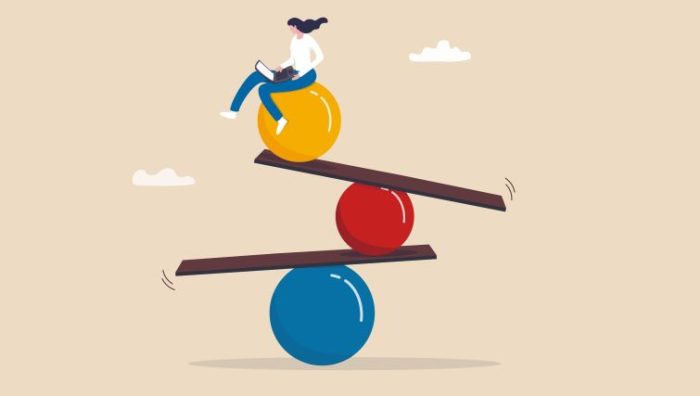
Imagine this: It’s 5 o’clock in the evening, and you’re exhausted and mentally drained after a long day at work. You can’t help but wonder if there’s more to life than work.
Well, my friend, I’m here to tell you that there is.
Employee wellness and work-life balance greatly impact happiness and success. In today’s fast-paced world, it’s easy to neglect our well-being in pursuit of professional goals.
But here’s the thing: taking care of yourself is necessary. Prioritizing wellness and finding a healthy work-life balance unlocks fulfillment and productivity.
In this article, we’ll explore the benefits of employee wellness and work-life balance, and discuss strategies to help you achieve them. Whether you’re a busy professional or a manager looking to create a thriving work environment, this article has something for you.
Are you ready to take control of your well-being and create a fulfilling life? If yes, keep reading – because the insights and tips you’ll gain from this article can transform the way you work and live.
Employee Wellness and Maintaining a Healthy Work-Life Balance
Maintaining employee wellness is vital for striking a healthy work-life balance. When employees are physically and mentally fit, they can better handle the demands of their jobs and personal lives. This results in increased productivity, job satisfaction, and overall well-being.
Promoting regular physical activity is a fundamental part of employee wellness. Encouraging employees to exercise regularly enhances their physical health, reduces stress, and improves their mood. Offering gym access, organizing fitness challenges, or providing incentives for physical activity participation can help employees integrate exercise into their daily routines.
Mental wellness influences an employee’s coping capability, emotion management, and mindset. Employers can support it by promoting work-life balance and fostering a supportive, inclusive work environment. Additional resources such as mindfulness workshops or counseling services can contribute to employee well-being.
To ensure a healthy work-life balance, employers can implement flexible work arrangements, like remote work or flexible hours. This allows employees to better manage personal commitments and reduces stress. Encouraging regular breaks, including lunch breaks and vacation time, also prevents burnout and maintains well-being.
In conclusion, prioritizing employee wellness and work-life balance has a positive impact on both employees and the organization. By promoting physical and mental well-being, providing resources and support, and implementing flexible work arrangements, employers can create a positive work environment that fosters engaged, happy, and healthy employees.
Overview
Employee wellness and work-life balance are crucial for the overall happiness and productivity of employees. Wellness encompasses physical, mental, and emotional well-being, while work-life balance involves effectively managing personal and professional lives.
This focus on employee well-being and balance yields multiple advantages for organizations. A healthy and balanced workforce is more engaged, motivated, and productive. Moreover, absenteeism is reduced. When employers provide support and value, employees demonstrate greater job satisfaction and retention.
Employers can promote employee wellness and work-life balance through strategies such as offering flexible work arrangements, wellness programs, and an inclusive work environment. Encouraging regular breaks and vacations is also important.
The table below outlines key elements of employee wellness and work-life balance and their impact on individuals and organizations:
Element Impact on Individuals Impact on Organizations
Physical well-being – Improved health and energy – Reduced healthcare costs
Mental well-being – Reduced stress and anxiety – Higher employee engagement
Emotional well-being – Increased happiness – Lower turnover rates
Prioritizing work-life balance benefits employees and organizations. A supportive work environment fosters a motivated and engaged workforce, resulting in increased productivity and long-term success.
Key Features or Points
When considering employee wellness and work-life balance, there are key features to consider that can create a positive work environment and improve well-being.
Companies should prioritize mental health and well-being, providing resources for employees experiencing stress, anxiety, or mental health issues. Counseling services, flexible work hours, and promoting a healthy work-life balance can help.
Promoting physical health is crucial. Encouraging employees to take breaks and engage in physical activity can reduce sedentary behavior and improve overall fitness. Providing on-site fitness facilities or subsidizing gym memberships further promotes physical health.
Flexible work arrangements greatly contribute to work-life balance. This includes remote work, flexible hours, part-time schedules, and job sharing. Allowing employees to have control over their work schedule helps them better manage their personal and professional lives.
Companies should foster a supportive and inclusive work environment. This means promoting respect, understanding, and open communication. By valuing diversity and promoting inclusivity, employees feel supported and engaged in their work.
Recognizing and rewarding employees for their hard work and achievements contributes to their well-being and work-life balance. Offering incentives or bonuses boosts morale and motivation.
Practical Tips or Strategies

Promoting employee wellness and work-life balance involves establishing clear boundaries between work and personal time. Encourage employees to disconnect from work emails and notifications outside of working hours. Limit after-hours communication unless absolutely necessary, to respect their personal time. This will prevent burnout and increase productivity while promoting overall well-being.
Offering flexible work arrangements is an effective strategy. Allow employees more control over their schedules, such as remote work options or flexible hours. This helps them better balance work and personal responsibilities, reducing stress and improving satisfaction. Consider implementing a compressed workweek, where employees work longer hours for fewer days, allowing for extended weekends and more time for personal activities.
Encouraging and supporting physical activities is crucial for employee wellness. Provide wellness programs or subsidize gym memberships to promote exercise. Organize team-building activities that involve physical activities, like sports tournaments or hikes. By incorporating physical activities into the workplace, you help employees stay active and improve overall health.
Lastly, offering mental health resources and support is essential for promoting work-life balance. Provide access to counseling services or employee assistance programs where employees can seek professional help for stress, anxiety, or other mental health concerns. Encourage open communication and make it clear that seeking support is encouraged and supported within the organization. By prioritizing mental health, you can create a healthier and more productive work environment.
Personal Perspective or Case Study
Achieving work-life balance and maintaining employee wellness has been crucial for my overall well-being and productivity. As a working professional, I have experienced high stress and burnout, where work demands consumed my life. However, by implementing strategies to prioritize my personal life, I have seen significant improvements in my mental health and job satisfaction.
For instance, I set clear boundaries between work and personal life. This includes disconnecting from work emails and phone calls during evenings and weekends. Creating this separation allows me to fully engage in leisure activities and spend quality time with my family and friends.
I prioritize self-care activities like exercise, mindfulness, and regular breaks. These practices have increased my energy levels, improved focus, and helped manage stress. Achieving work-life balance and prioritizing employee wellness is crucial for long-term productivity and job satisfaction. By setting boundaries and seeking a harmonious balance, individuals can enhance their overall well-being and performance.
Summary and Final Thoughts
In summary, employee wellness and work-life balance are crucial for a positive and productive work environment. Prioritizing these factors results in increased job satisfaction, lower turnover rates, and improved productivity. Organizations can achieve this by providing wellness programs, flexible schedules, and promoting a healthy work-life balance. This leads to better performance, higher engagement, and increased company loyalty. However, employers must recognize that achieving these goals requires tailored approaches that consider individual needs and preferences. Offering a range of support systems and options is essential.
Fostering a culture of open communication and empathy is crucial in addressing employees’ individual needs and ensuring they feel valued and supported. Regular check-ins, feedback sessions, and surveys help gauge the effectiveness of wellness initiatives and make necessary adjustments.
Employee wellness and work-life balance should be a top priority for organizations aiming to create a positive and thriving work environment. By investing in employees’ well-being, companies can see improved productivity, job satisfaction, and long-term loyalty. With the right strategies, organizations can create a workplace where employees can thrive professionally and personally.
Interviews

Interviews are an essential part of the hiring process and play a crucial role in assessing a candidate’s suitability for a role. Employers use interviews to gather information about a candidate’s skills, qualifications, and personality traits.
During interviews, employers often ask behavioral questions to understand how a candidate has handled specific situations in the past. These questions provide insight into a candidate’s problem-solving abilities, decision-making skills, and ability to work well in a team.
Interviews are also an opportunity for candidates to showcase their knowledge, enthusiasm, and passion for the role and the company. Candidates should come prepared, research the company, and articulate their relevant experience and accomplishments.
Interviews should be a conversation, allowing employers and candidates to ask questions. Candidates can gather information about company culture, work-life balance, and opportunities for growth to help them make an informed decision.
Related Resources
After learning about employee wellness and work-life balance, it’s time to take action. Here’s a list of resources to help you explore and apply the insights:
– Books: “The Happiness Advantage” by Shawn Achor and “Thrive” by Arianna Huffington provide valuable insights and tips on prioritizing well-being and finding life balance.
– Podcasts: Tune into “The Life Coach School Podcast” by Brooke Castillo and “Optimal Living Daily” by Justin Malik for inspiring episodes on personal development, productivity, and work-life balance.
Remember, it’s not enough to simply have knowledge about employee wellness and work-life balance. Take action and integrate these principles into your own life. Reflect on what you’ve learned today and think about how you can apply these insights to your situation.
Commit to prioritize your well-being and create a better balance between work and personal life. Implement small changes and track your progress. Remember, it’s a journey, and every step counts.
So go ahead, explore the resources, engage with the content, and share your thoughts and experiences with others. Empower yourself to live a healthier, more fulfilling life with a better work-life balance. You deserve it!

